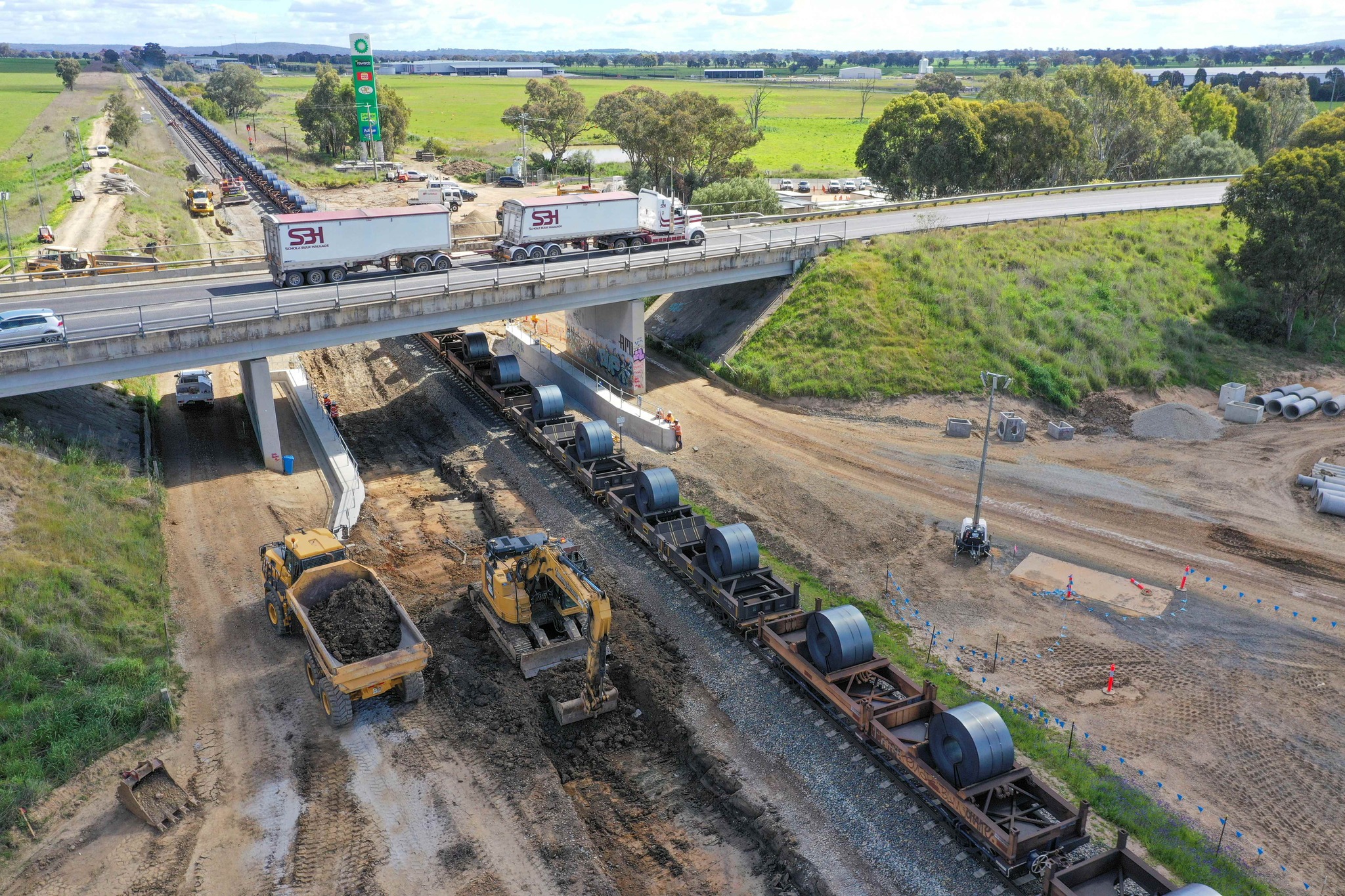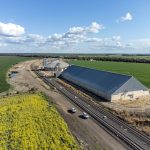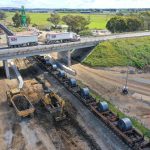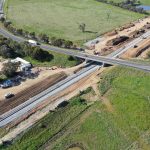 Major construction for Stockinbingal – Parkes rail section of Inland Rail in New south Wales has been completed by the contractor Martinus Rail which implements other works on multiple sites.
Major construction for Stockinbingal – Parkes rail section of Inland Rail in New south Wales has been completed by the contractor Martinus Rail which implements other works on multiple sites.
“It was a group effort behind the scenes for both Inland Rail and Martinus teams to take advantage of this possession window and successfully complete our planned works ahead of schedule. Together we were able to safely deliver these works six months earlier than originally planned,” Melvyn Maylin, Inland Rail Director of Program Delivery for Albury to Parkes, said.
Workers across three sites from Stockinbingal to Parkes worked around the clock to kickstart major construction and return the line to operation.
Works on Stockinbingal – Parkes rail section included enhancements or modifications to specific sites along the existing 170.3 km of rail corridor in regional New South Wales. The enhancement and modification works were required to create height and width (horizontal and vertical) clearance to accommodate double-stacked freight trains. These works include increasing vertical clearance on the Lachlan River rail bridge in Forbes, increasing vertical clearance under the Wyndham Avenue road bridge in Forbes and the construction of a new crossing loop north of the Daroobalgie Road level crossing.
New precast culverts were installed under the main line at Daroobalgie, in New South Wales, in preparation for the future crossing loop to be constructed next year.
Track and shoulder formation works and track slews were completed at both the Bribbaree and Caragabal yards, both in New South Wales, allowing sufficient clearance for double stacked trains.
These sites are now complete and meet the requirements for Inland Rail.
Other clearance and safety works include modifying Forbes railway station and several existing crossing loops, structures and utilities along the line.
In June 2023, Inland Rail appointed Martinus Rail to design and construct enhancement works on the Albury – Illabo and Stockinbingal – Parkes rail sections of Inland Rail.
The works are a key milestone towards Inland Rail being completed between Beveridge and Parkes by 2027, and connecting to existing rail networks between Melbourne, Sydney, Perth, Adelaide, and the Illawarra.
At the same time, major construction of the Narrabri – North Star Phase 1 section of Inland Rail is set to be complete at the end of October. The section between Camurra and North Star is on track to return to service (at the end of October), allowing trains to service grain silos at Milguy, Croppa Creek, and North Star after two and a half years. Operators have already been reaping the benefits of Inland Rail upgrades to the line between Narrabri – South Moree, which has been operational since November 2022.
The Narrabri – North Star phase 1 includes upgrades to 176 km of track along the existing corridor from Narrabri to North Star made by the Trans4m Rail which is now undertaking finishing and commissioning works along the alignment.
The phase 2 of the project involves further upgrades and building 2 km of new track north of Moree which is currently under approval process with Inland Rail now preparing a preferred infrastructure report and a response to submissions for the NSW Department of Planning and Environment.
The Narrabri – North Star Phase 1 works will see improved efficiency and reliability on the main line, as well as boosting resilience to extreme weather events, with the track withstanding the worst flood in a decade to hit Moree late last year.
As a result of the construction of Narrabri – North Star phase 1 section, the regional communities experienced an economic boost of AUD 244 million (USD 155.6 million) involving 137 local businesses in northwest New South Wales.
Five crossing loops, seven bridge upgrades, and improved safety at 57 level crossings have all been included in the design to improve safety and service reliability on the network.
Once phase 2 is completed, the upgraded track between Narrabri and North Star will allow the transport of heavier freight volumes of cargo at higher speeds providing access to the Hunter Valley rail network.
Share on:






